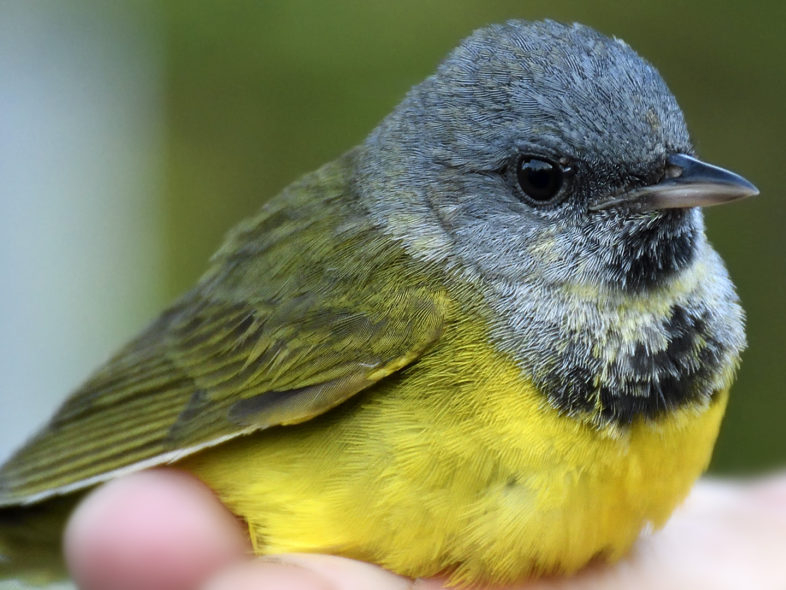
An adult male Mourning Warbler, the first individual of this species banded by VCE in 28 years of avian field studies on Mt. Mansfield. 19 June 2019. / © Michael Sargent
VCE’s third Mansfield banding session of 2019 was met with overdue fine weather, more birds in the hand than the previous two weeks, and a couple of surprises. Calm winds and warm temperatures made for ideal netting conditions, allowing Nathaniel Sharp, Spencer Hardy and me to set up 24 mist nets during the evening of 18 June. Although numbers of local breeders on the ridgeline remain markedly low, judging from vocal activity and capture rates, we enjoyed our most productive banding of the young field season, processing 43 individuals by the time we closed up shop in late morning on the 19th.
It should be noted for context that this boost in success, while encouraging, brings us to only 101 mist net captures for the season. One year ago, we had 231 captures under our belt through the same date. The ridgeline’s diminished activity—if real—is both perplexing and disconcerting. All species appear to be in relatively low numbers, though nesting is definitely underway, as most netted females showed well-advanced incubation or brood patches. Capture rates of two commonly netted species—Bicknell’s Thrush and Blackpoll Warbler—are down 33% and 22%, respectively, from the same date in 2018 (BITH = 22 vs. 33 individuals, BLPW = 18 vs. 22 birds). A year ago on this date, we had captured 11 Swainson’s Thrushes; this year 3.
Our overall paucity of mist net captures was nicely offset by several surprise appearances. Foremost among those was a dapper male Mourning Warbler, the first of this species we have ever captured on Mansfield. That was followed in short order by an out-of-habitat Red-eyed Vireo (we catch 1 or 2 most years) and the season’s first Magnolia Warbler, a striking adult male. This latter bird was especially noteworthy in undergoing active molt of its primary feathers, half of which had already been replaced on each wing. The post-breeding molt of this species, and nearly all other migratory songbirds, typically starts in mid-late July—this bird’s exceptionally early start likely indicates that it never obtained a mate and so forsook any hope of breeding.
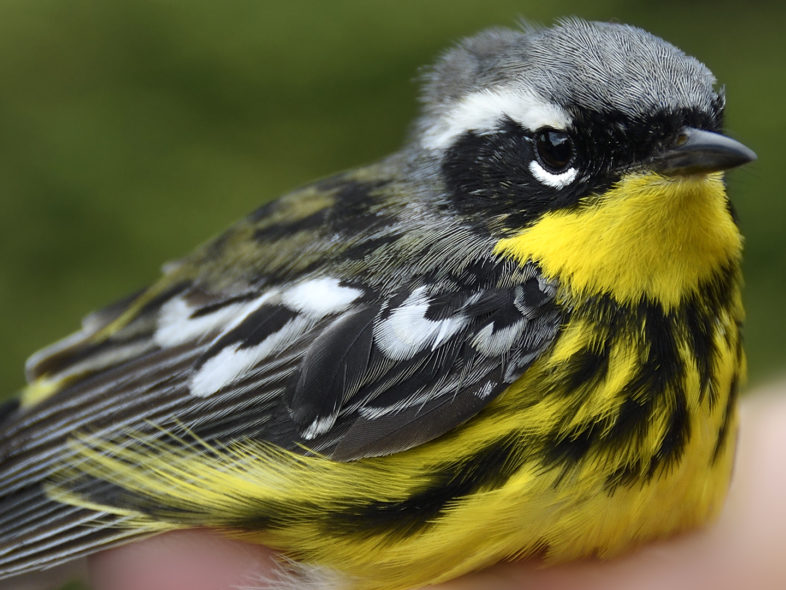
An adult male Magnolia Warbler, the first individual of this species encountered on the Mansfield ridgeline in 2019. / © Michael Sargent
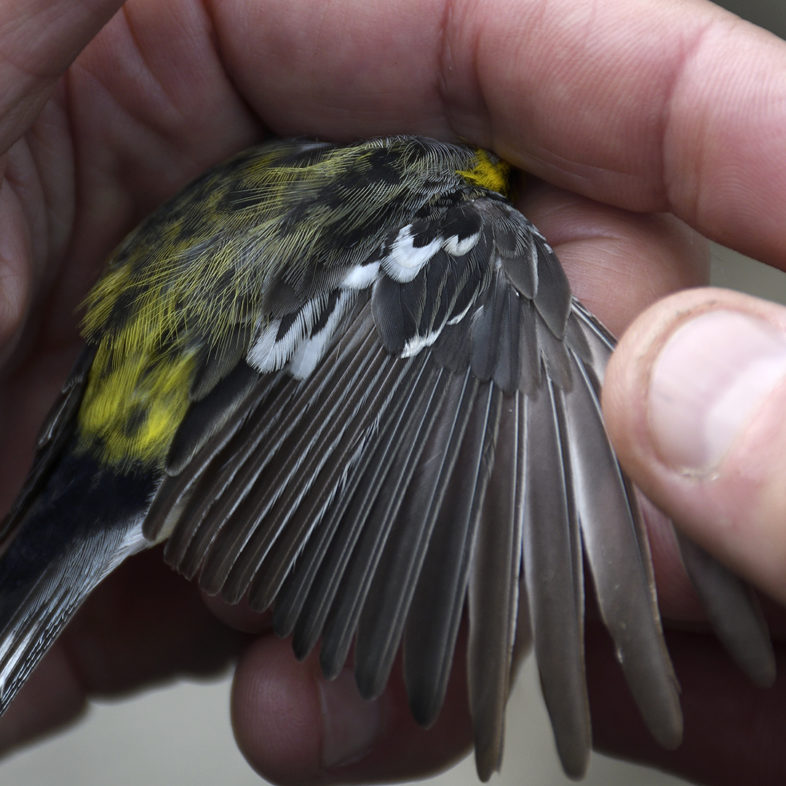
Exceptionally early primary molt in a male Magnolia Warbler on Mt. Mansfield, 19 June 2019. Note the fresh, darker appearance of the newly-replaced inner 5 primaries contrasting with the duller and more worn 4 outer primaries. / © Michael Sargent
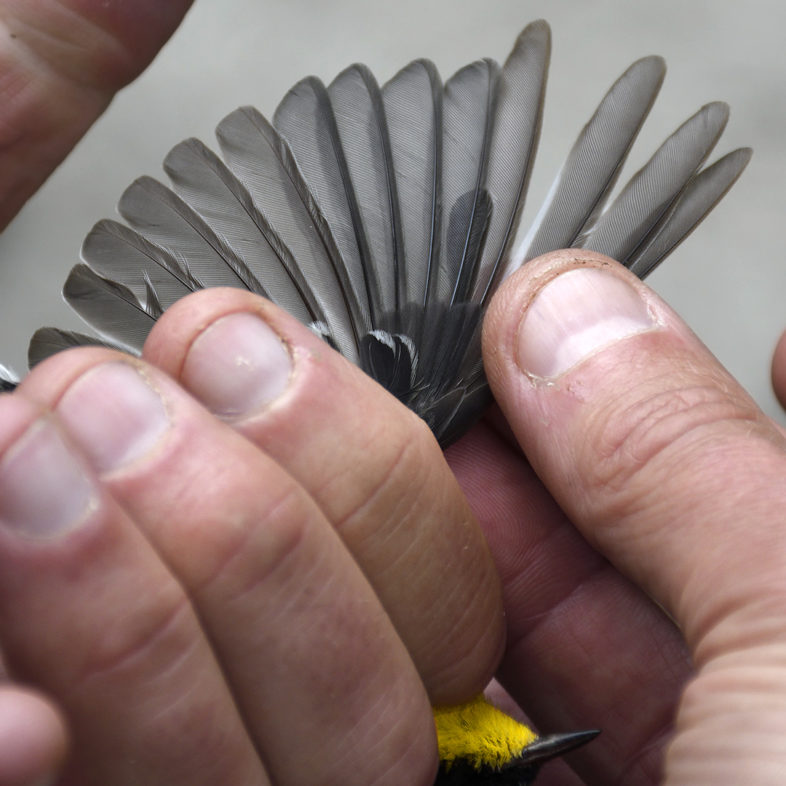
Unusually early active wing molt in a male Magnolia Warbler on Mt. Mansfield, 19 June 2019. The innermost 4 primaries are new, #5 is half-grown, and the outermost 4 primaries are old. / © Michael Sargent
Our two-day total of 43 mist net captures included:
Red-eyed Vireo — 1 adult of unknown sex
Bicknell’s Thrush — 8 (new male and female, 3 return males [1 from 2016, 2 from 2018], 2 return females [2017 and 2018], 1 within-season recapture male)
Swainson’s Thrush — 1 new female
American Robin — 3 new females
Dark-eyed Junco (Slate-colored) — 4 (2 new females, within-season male and female recaptures)
White-throated Sparrow — 6 males (5 new, 1 return from 2018)
Mourning Warbler — 1 male, first-ever capture of this species on Mansfield
Magnolia Warbler — 1 new male, first capture of season
Blackpoll Warbler — 7 (3 new males, 1 new female, 1 return male from 2017, 2 return females from 2018)
Yellow-rumped Warbler (Myrtle) — 11 (6 new males, 2 new females, 3 return males from 2018)
It’s far too early to push the proverbial panic button and declare “silent spring” on the Mansfield ridgeline. We’ll be back there weekly through early August, and we’ll have a much better idea of the local breeding population 2 or 3 weeks from now. Birds aside, however, we’re always pleased to host visitors to our long-term banding site, and to introduce the next generation of avian enthusiasts to the wonders of a bird in the hand.
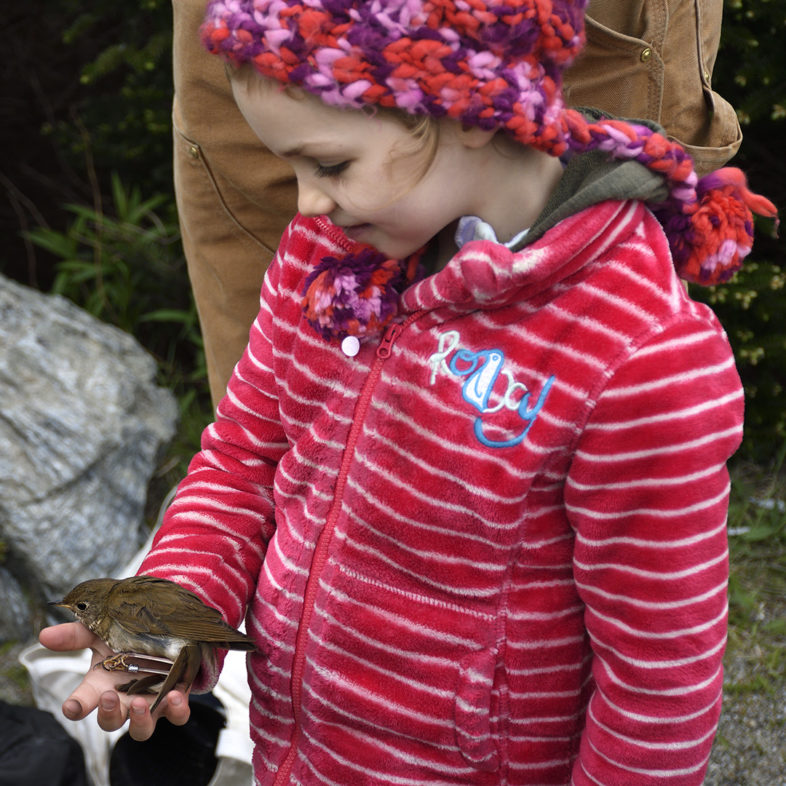
Nora Rogers, a potential next-generation bird conservationist, cradles a banded Bicknell’s Thrush prior to its release. Mt. Mansfield, 19 June 2019. / © Michael Sargent

Another fascinating account, more beautiful photos. Incredibly valuable longterm study!
Your activities, comments, and photos are always of great interest to me. Your study is much appreciated. If I were forty or fifty years younger I would love to join you!
Mike
Wow Chris. Next you will be finding parrots.
What an excellent report, Chris with superb photos, Michael. I especially liked the specific information on interpreting the molt feathers.
Even though you are off to a rather slow start it is important to remember that your dedication to monitoring bird populations is appreciated by myself and countless others.